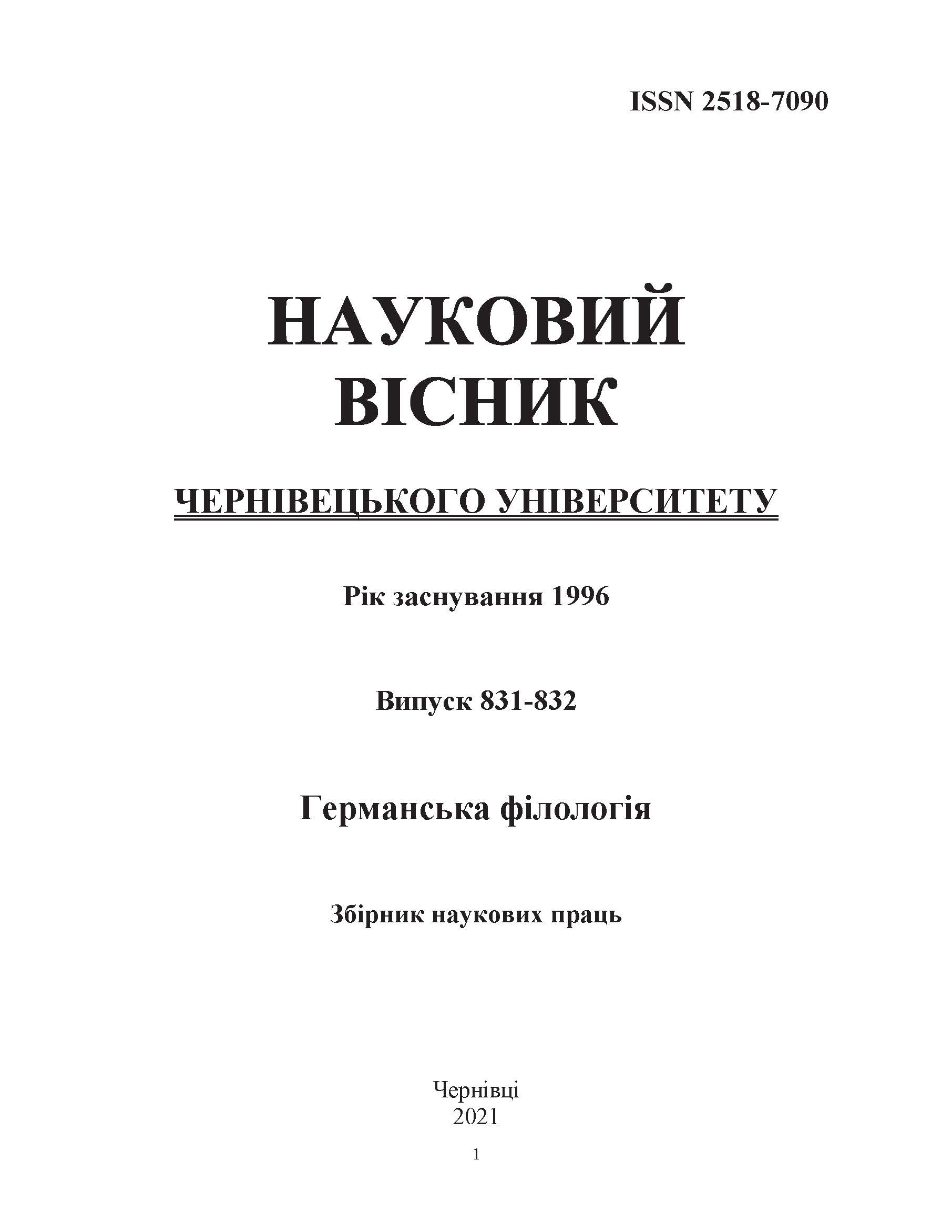NOUNS, ADJECTIVES, AND VERBS AS COMPONENTS OF GERMAN COMPOUND WORDS: РECULIARITIES OF SEMANTICS AND COMBINATION
DOI:
https://doi.org/10.31861/gph2021.831-832.198-218Keywords:
compound noun, lexical-semantic subclass of nouns, adjectives and verbs, range/selectivity of combination, significant tiesAbstract
In the article semantic features of nouns, adjectives, and verbs as components of German determinative compound words with the models “noun + noun”, “adjective + noun”, “verb + noun” are investigated using three functional styles (belletristic, publicistic and scientific). Their lexico- semantic subclasses (34 subclasses of nouns, 14 of adjectives and 19 of verbs) were singled out and taken for the further analysis of combination of components in compound words. Using traditional methods (analysis by direct components, transformation analysis, modelling method and analysis of components or sems), as well as quantitative (chi-square criterion and coefficient K) some features of compatibility have been analyzed and its main characteristics have been identified. In this respect, the compatibility ratio of the registered models to the theoretically expected ones has been elucidated. Its intensity has been proved to be determined by the coefficient K and shows the strength of the connection between the components, as well as the number of stable connections.
It was established that the model "noun + noun" is characterized by the broadest combinatory range (0.8), thus demonstrating the high activity and popularity of compound nouns of this type in the most lexico-semantic subclasses. Stable connections between components are fixed in all of the models under study, however their quantity and intensity differ. Thus, most stable connections are in a model "noun + noun" (14% of total number of the fixed models), the most powerful connection (K = 0.27) in LSS of nouns “Plants” + LSS of nouns “Plants” and LSS of adjectives “Belonging” + LSS of nouns “State, its attributes”. The research has also proved that semantic identity or congruence of components, when units of the same LSS are combined in one model or consistency is observed between them





